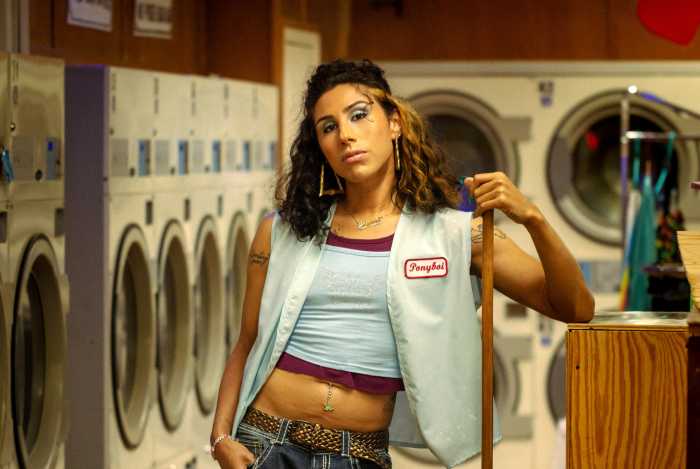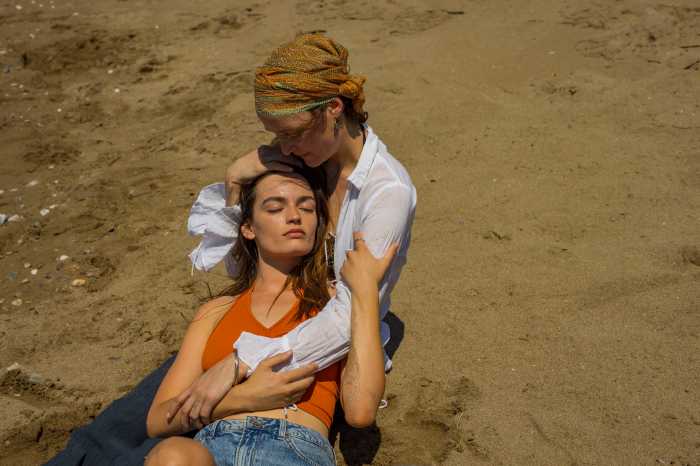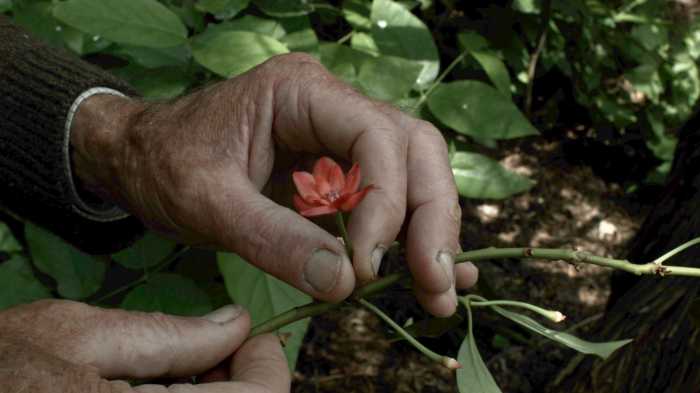BY ANDREY HENKIN | Music and film have been inextricably linked since the first pianist played along with a silent movie in 1895. In those days, music was an essential part of the experience but as talkies gave way to the summer blockbuster, the role of music became more incidental. At the Kitchen February 13, however, filmmaker – and ersatz guitarist – Brent Green presented works closer in spirit and execution to the Age of the Silver Screen.
Green, according to his biography, is “a self-taught animated filmmaker who lives and works in a barn in Cressona, PA.”
The evening – a well-attended added second show – featured a series of Green's animated movies, seven shorts incorporating such techniques as traditional drawing, stop-motion, and live-action overlays.
Brent Green creates film irreducibly tethered to music.
It is hard, even in Green's relatively brief career thus far, to discern a visual aesthetic but what was obvious, in works like “Hadacol Christmas” or “Paulina Hollers” or “Carlin,” is that Green spends way too much time in that barn.
His vision is one of dystopian Americana, Walt Disney animating Flannery O'Connor short stories or Tool's videomaker working on murder ballads.
And in this vision music exists on an equal plane. The films were accompanied by Green's plinky guitar and a trio of very accomplished and flexible musicians – Fugazi drummer Brendan Canty, improvising cellist Fred Lonberg-Holm, and soundtrack composer Jim Becker on violin, guitar, and banjo. That Green would choose such players and primarily let them improvise over his films demonstrates how important sound is to his concept. Without the accompaniment – and to call it that is in fact a misnomer – the films would lose much of their impact and linear flow.
Green's narration and occasional singing, delivered in a vulnerable cracking voice more suited to someone undergoing puberty than to Green with his thick black Appalachian beard, added a third element. His storytelling was sometimes only vaguely connected with the imagery and/or the music, creating a bizarre triangle that took some getting used to. With some pieces, like “Susa's Red Ears,” about “a girl with a firetruck in her head on the day the sun explodes saves herself, and very little else,” the effect was jarring and uncomfortable.
On others, “Carlin” for example, about Green's diabetic aunt filmed in the house in which he grew up, or “Paulina Hollers,” about a “religious zealot mother kills herself to follow her dead son into hell,” the effect was even more jarring and uncomfortable but ultimately more successful.
Across the 50 minutes, Green's work was at its best when the audience could follow the winding paths of the stories; then the music added a stately grace and his tortured narration became powerful, a part of the oral tradition of storytelling. To discuss the individual merits of the three components – animation (crudely complex), narration (informal and at times confusing), and music (remarkably coherent and rich) – is to miss the point. None existed without the other and though they may have arisen in a specific order, they could not be broken apart without the whole barn collapsing.


































